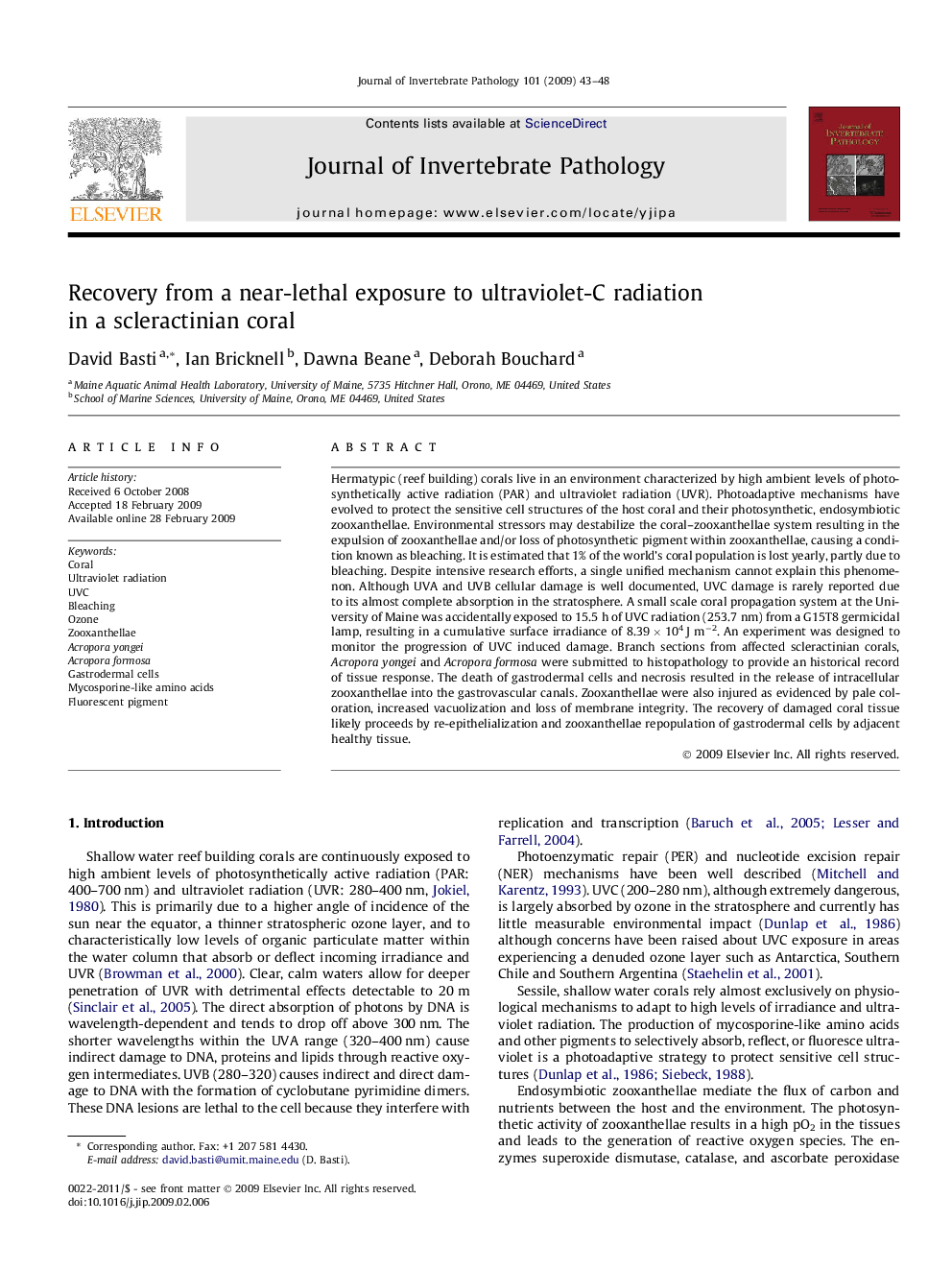| Article ID | Journal | Published Year | Pages | File Type |
|---|---|---|---|---|
| 4558236 | Journal of Invertebrate Pathology | 2009 | 6 Pages |
Abstract
Hermatypic (reef building) corals live in an environment characterized by high ambient levels of photosynthetically active radiation (PAR) and ultraviolet radiation (UVR). Photoadaptive mechanisms have evolved to protect the sensitive cell structures of the host coral and their photosynthetic, endosymbiotic zooxanthellae. Environmental stressors may destabilize the coral-zooxanthellae system resulting in the expulsion of zooxanthellae and/or loss of photosynthetic pigment within zooxanthellae, causing a condition known as bleaching. It is estimated that 1% of the world's coral population is lost yearly, partly due to bleaching. Despite intensive research efforts, a single unified mechanism cannot explain this phenomenon. Although UVA and UVB cellular damage is well documented, UVC damage is rarely reported due to its almost complete absorption in the stratosphere. A small scale coral propagation system at the University of Maine was accidentally exposed to 15.5Â h of UVC radiation (253.7Â nm) from a G15T8 germicidal lamp, resulting in a cumulative surface irradiance of 8.39Â ÃÂ 104Â J mâ2. An experiment was designed to monitor the progression of UVC induced damage. Branch sections from affected scleractinian corals, Acropora yongei and Acropora formosa were submitted to histopathology to provide an historical record of tissue response. The death of gastrodermal cells and necrosis resulted in the release of intracellular zooxanthellae into the gastrovascular canals. Zooxanthellae were also injured as evidenced by pale coloration, increased vacuolization and loss of membrane integrity. The recovery of damaged coral tissue likely proceeds by re-epithelialization and zooxanthellae repopulation of gastrodermal cells by adjacent healthy tissue.
Related Topics
Life Sciences
Agricultural and Biological Sciences
Ecology, Evolution, Behavior and Systematics
Authors
David Basti, Ian Bricknell, Dawna Beane, Deborah Bouchard,
